Soweto. South West Township. Somewhat boring name, but those six letters encompass so much about recent South African history, and the place became symbolic of the whole country, going some way to explaining some of the weird perceptions that people, both domestically and internationally, have about South Africa, its towns, and its people.

Overview of part of Soweto
See, perception is a strange thing. The way you view a place depends largely on your own feelings about it; whether you know a place well or not often doesn’t come into it. South Africa in general often comes under this banner – certainly in the run-up to the 2010 Football World Cup the newspapers in the UK were full of scare-stories about the country; the crime rate, the difficulty in getting to the stadiums, the lack of infrastructure etc; and many believed these stories despite few people ever having been there and seen it for themselves. They were simply reporting on what they’d heard from their friends, or still focussed on what they remember the country used to be like – similar to how my mother was worried when I took a solo trip to Cambodia, because she remembered the Khmer Rouge regime and still had that perception. For clarification, I was born in their ‘Year Zero’ when they came to power, they were in charge for less than four years, and most of them had been arrested or dead by the turn of the millennium. I went in 2012, aged 36.
These perceptions, interestingly, are often enhanced by what the media and society call ‘ex-pats’ (immigrants, but white, and therefore ‘acceptable’), who may have their own agendas and view of what the country has become. Especially as those ex-pats generally are white, and doubly so if they lived through the Apartheid regime. They may tell you that the townships are violent, completely unsafe, especially for tourists. They may tell you that it’s dangerous to walk in the cities at night, and that everyone lives in houses protected by electric fences and even security guards because it’s the only way they can sleep at night without the fear of aggravated burglary. They may even tell you to avoid the Johannesburg area completely and spend all your time in Cape Town.
As mentioned previously, my hostel in Pretoria was protected by an automatic gate & an electric fence. I am absolutely certain that the owners felt they need it, because all the other buildings on the street had one. My hostel was in a long dead-end street, lined with trees, in a largely quiet suburban area of Pretoria that, if it were in any British town, might be considered ‘well-to-do’, if not outright ‘exclusive’. I strongly suspect that fear of crime, the perception of it, outweighs the actuality. That’s not to say that the fear is completely unfounded, of course, although one might argue that walking down a street where every property has an electric fence does itself make you fear more than if they didn’t.
Perception would suggest therefore that an area with fewer precautions, fewer protections, should be more ‘dangerous’; doubly so if you believe a correlation between standard of living and crime. Most people have heard of Soweto. And most people will have an impression in their minds about it – dangerous, unruly, everyone’s out to get you, anarchy, rioting. Soweto, in British terms, is a council estate with 3.5 million people in it. I can already hear the presses of the Daily Mail rolling, feeding the trolls.
And yet …
The centre of Soweto is a calm oasis, pretty much given over to tourists, with cafes, designated walks, museums, and local entertainment. While some of the outlying suburbs look ‘rough’, this is more to do with badly-built housing (in some cases, mere shacks – the town was built cheaply and quickly, to house people the national government literally didn’t want to deal with) rather than the people. While a tourist might be singled-out as an obvious ‘outsider’, this is no less true in any other major urban area – there are some parts of every city, even those closest to home, into which I’d be wary of travelling.

Tourist-seeking street marketeers in the centre of Soweto
The area later known as Soweto was founded in the early 1930s, specifically to house Blacks that the South African government didn’t want living in Johannesburg, so even from the start it’s had that ‘outsider’ feel; this was, indeed, the very purpose and nature of ‘townships’ – they were created without much structure, often literally thrown together, as a place for non-whites to live, outside of ‘proper society’. They often had pretty much no electricity, water, or sewerage provision, nor was any heed given to provide education.
The first settlement here was named ‘Orlando’, after the responsible government official; other settlements soon followed. The term ‘Soweto’ wasn’t applied until the early 1960s, when the local government asked for suggestions for an all-encompassing name to cover all the townships to the south-west of Johannesburg; the final name being decided upon by committee. As you can tell.
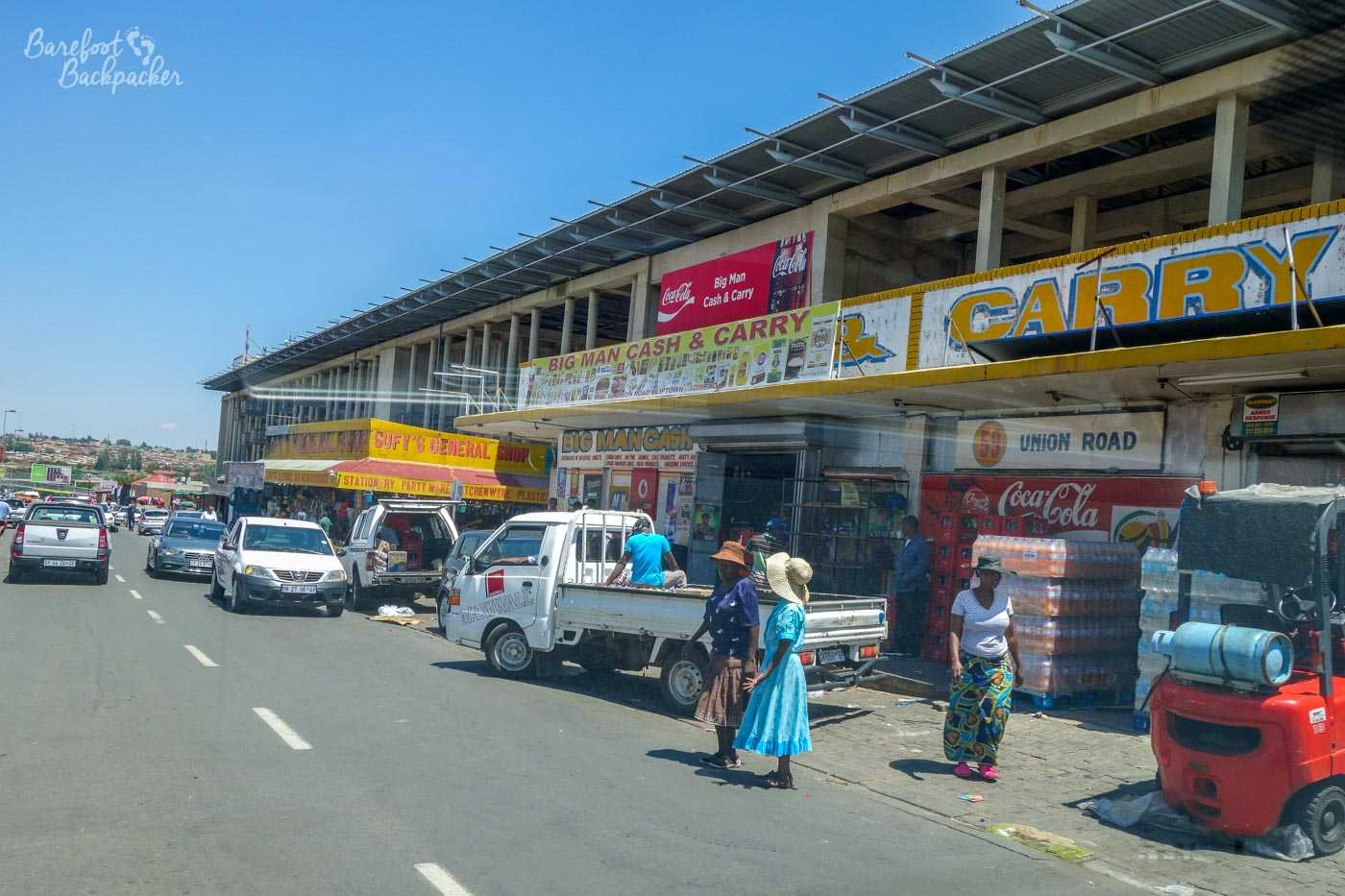
Shops in downtown Soweto, near Walter Sisulu Square
I visited the township on a tour via my hostel. I had been tempted to go directly and spend the night there, maybe I should have done, but I only had a limited amount of time on my trip so this was a much easier way of seeing it. There were a few of us, maybe 10-12 people, and we were guided around the township by a local resident; strange as it may have seemed to my younger self, but Soweto is now quite a touristy place – some people, like me, who are keen to see for themselves a place they may only have heard about in the news, although for many there is one major figure above all who draws tourists to the place.
It’s hard not to talk about Nelson Mandela too little. One of the leaders of the ANC, the main Black opposition to the Apartheid governments of South Africa in the 50s and 60s, he was of course arrested and imprisoned for life on charges of terrorism and conspiracy to overthrow the government, only to become even more so the symbolic figurehead for the international anti-apartheid movement, before being released 26 years after conviction and soon after becoming President. As such, he’s one of the most important people in South African history and culture, so being closely associated with Soweto is a huge draw for the town.
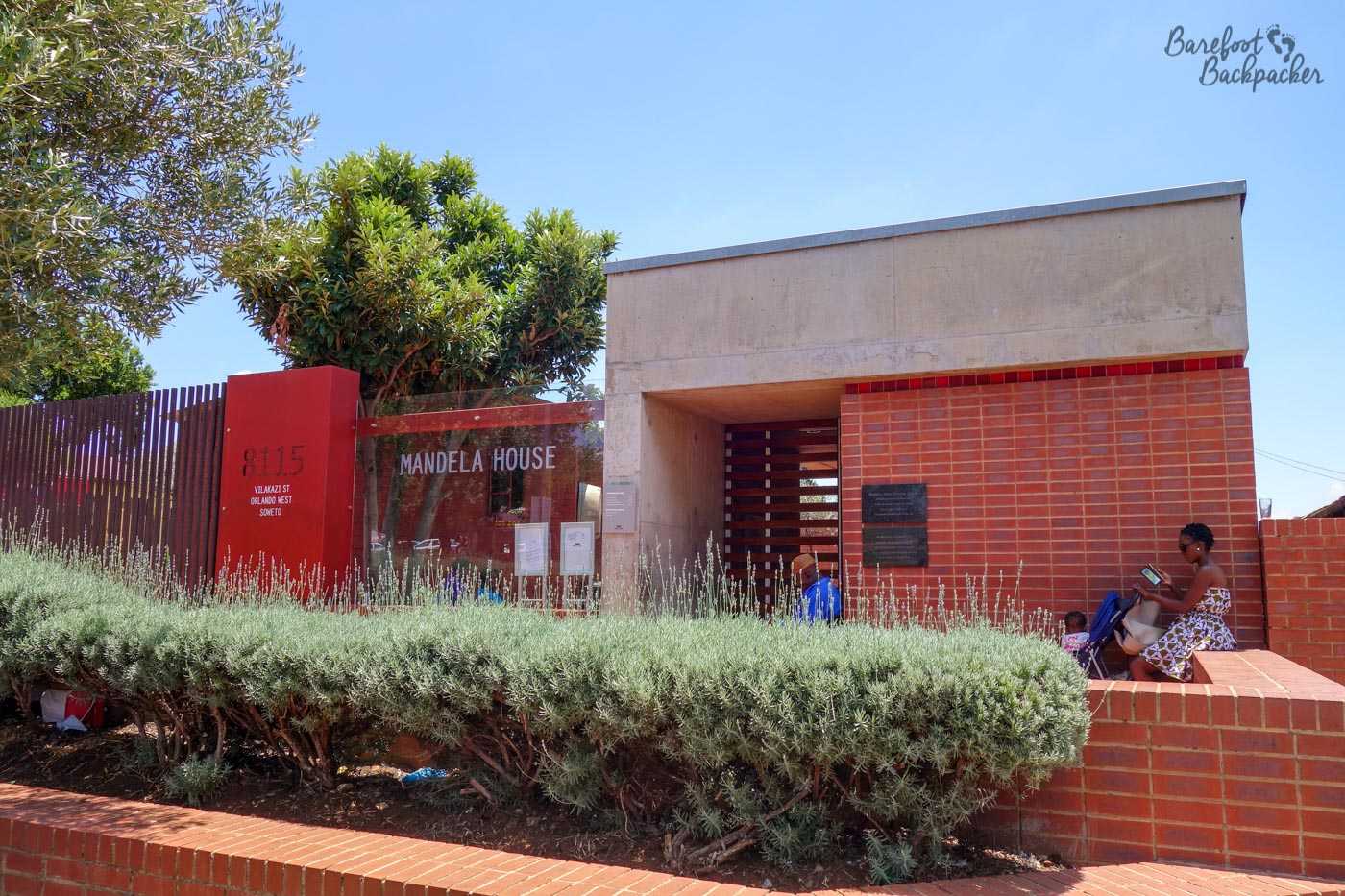
Outside the Nelson Mandela Museum, in the centre of Soweto
In the centre of Soweto is the Nelson Mandela Museum; it’s based in the house that he lived in during his 30s, before his arrest and imprisonment. It’s not a very big house, but it gives a sense of how he lived, plus it’s filled with memorabilia and trinkets relating to him. Famously, when released from prison, he said he only felt like he was free once he set foot inside that home again, although he didn’t end up living there for very long afterwards (about 11 days), as he seemed to always be on the move.
Additionally, within walking distance are the homes of both Winnie Mandela and Archbishop Desmond Tutu. Winne’s house isn’t marked as such, but Tutu’s is bedecked with a plaque identifying his importance. The tour I was on took us in a minibus slowly past both of them, but being still private houses all we could do was look at them from the outside.

Signpost in the centre of Soweto
Also close by is the memorial to Hector Pieterson, a 12-year-old boy shot during the Soweto uprising in 1976.
I talk more about this in a post specifically on the history of Apartheid, but in a nutshell: obviously a township like Soweto is going to be quite socially active and quite anti-government. In June 1976 local schoolchildren protested about being forced to be taught in Afrikaans, so the security forces went in and shot them, killing 20. It is a bit more nuanced than that, but, you know, not by a lot – one of the shot children was Hector Pieterson and he became famous after the publishing of a photograph of him dying by the journalist Sam Nzima, which (in 1970s terms) went ‘viral’.
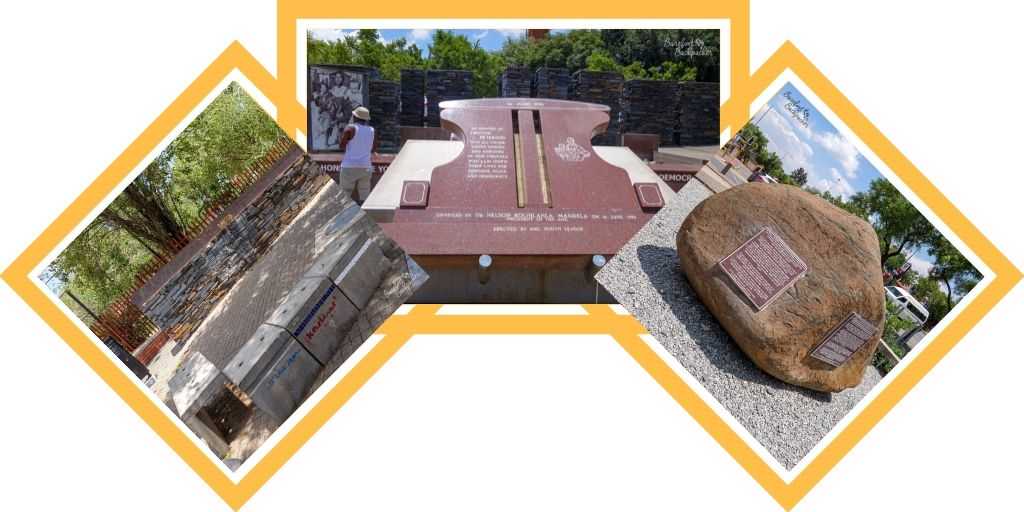
Scenes from the Hector Pieterson Monument in Soweto
It’s quite a sombre place – you’re left in absolutely no doubt what happened here, and it’s quite easy to imagine the situation as you stand looking across the square at the associated museum, which goes into a bit more detail and displays contemporary press clippings and photographs surrounding the protests in general.

Reproduction of Sam Nzima’s photo of Hector Pieterson
Many of the people who fled to escape the killings, across Soweto, ended up in the Regina Mundi Catholic Church, the largest Catholic church in the country (can hold around 6,000 people). Churches in general were important in the Apartheid world as, due to the restrictions on meetups, it was pretty much the only place where people could gather in any real numbers; due to its location in Soweto, and its size, the Regina Muni church became an important centre in the resistance movement. Though Archbishop Tutu was never based here, he certainly spoke here and was the facilitator of meetings held here in the post-Apartheid “Truth and Reconciliation Committee” that aimed to provide justice for those wronged by the regime.

Outside the Regina Mundi Church
One of the other main historical draws to Soweto is Walter Sisulu Square. Named after another leading member of the ANC who was also imprisoned for his activities and became a symbol for the fight against the Apartheid regime, this is a very large square which, in June 1955, was the scene of the Congress Of The People – a meeting of thousands of people (around 3,000 delegates and 7,000 observers) from across all South African social and cultural strata (though the majority, obviously, being Black South Africans) to create the ‘Freedom Charter’, a framework for a free and liberal constitution for South Africa. Unsurprisingly, the government at the time declared the Congress illegal, banned distribution and reference to the Charter, and put over 150 leading activists involved with it (including Walter Sisulu) on trial for treason – for the record, after a four year trial they were all acquitted.
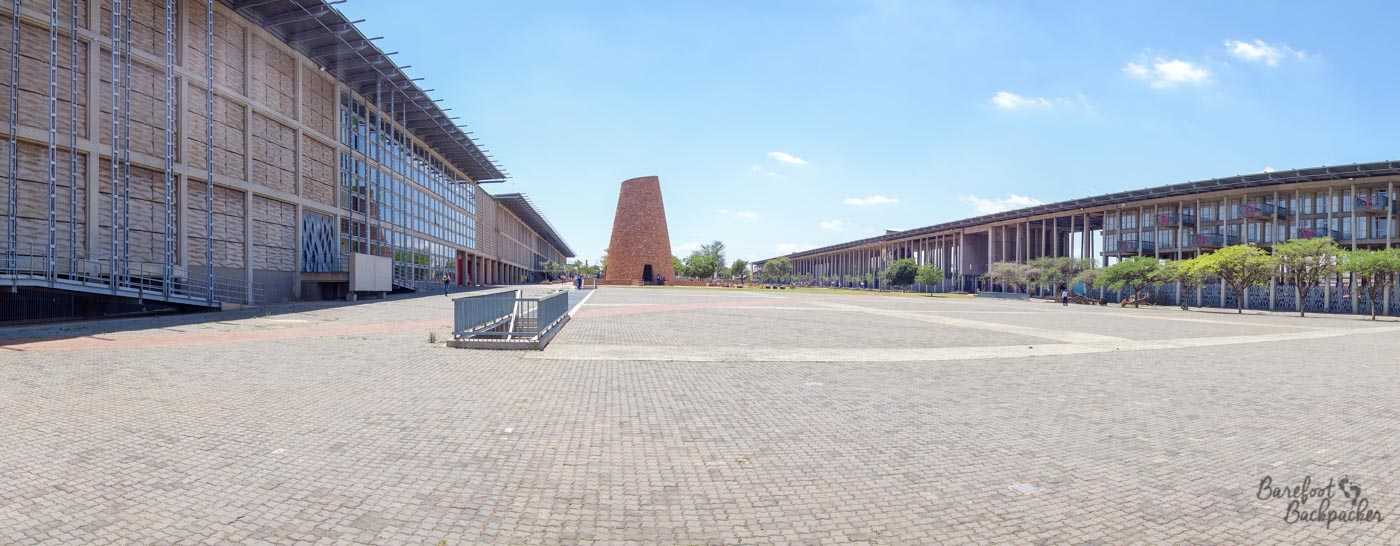
Walter Sisulu Square, Soweto
In the square now is an open-air museum about the Congress, and a tower that contains, struck on a series of metallic plates, the articles of the Charter. Unsurprisingly, many of these articles – especially the ones concerning freedoms – later became fundamental points in the post-Apartheid Constitution of South Africa.
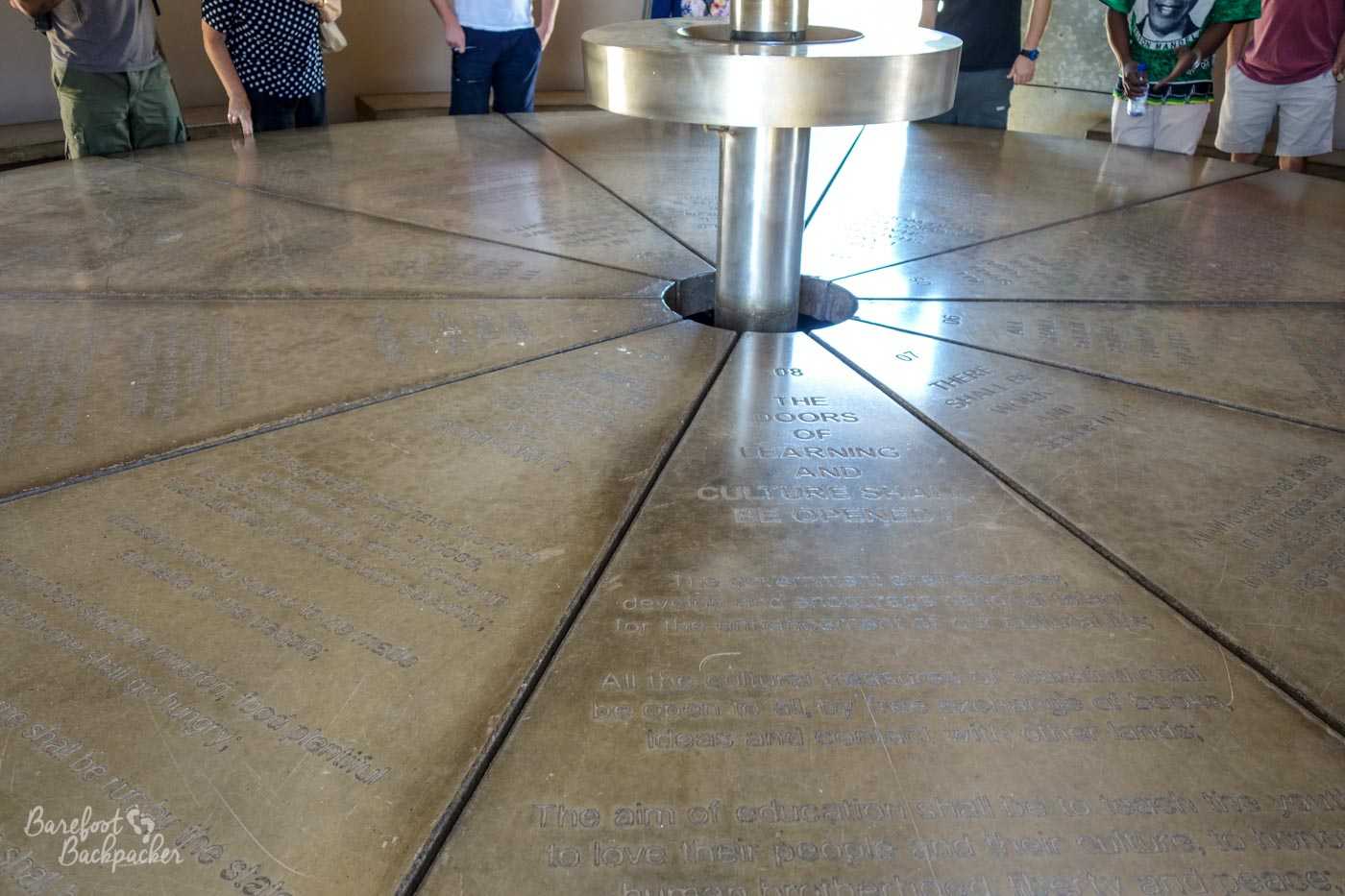
Part of the representation of the Freedom Charter
Speaking of towers, one of the most notable landmarks in Soweto is also its least political. The two cooling towers are pretty much all that remain of the Orlando Power Station, a coal-fired power station which supplied electricity for Johannesburg for over 50 years, being finally decommissioned in 1998. Due to their height (about 100m) in a fairly flat plain with few buildings in the way, you can see them from quite a way away.
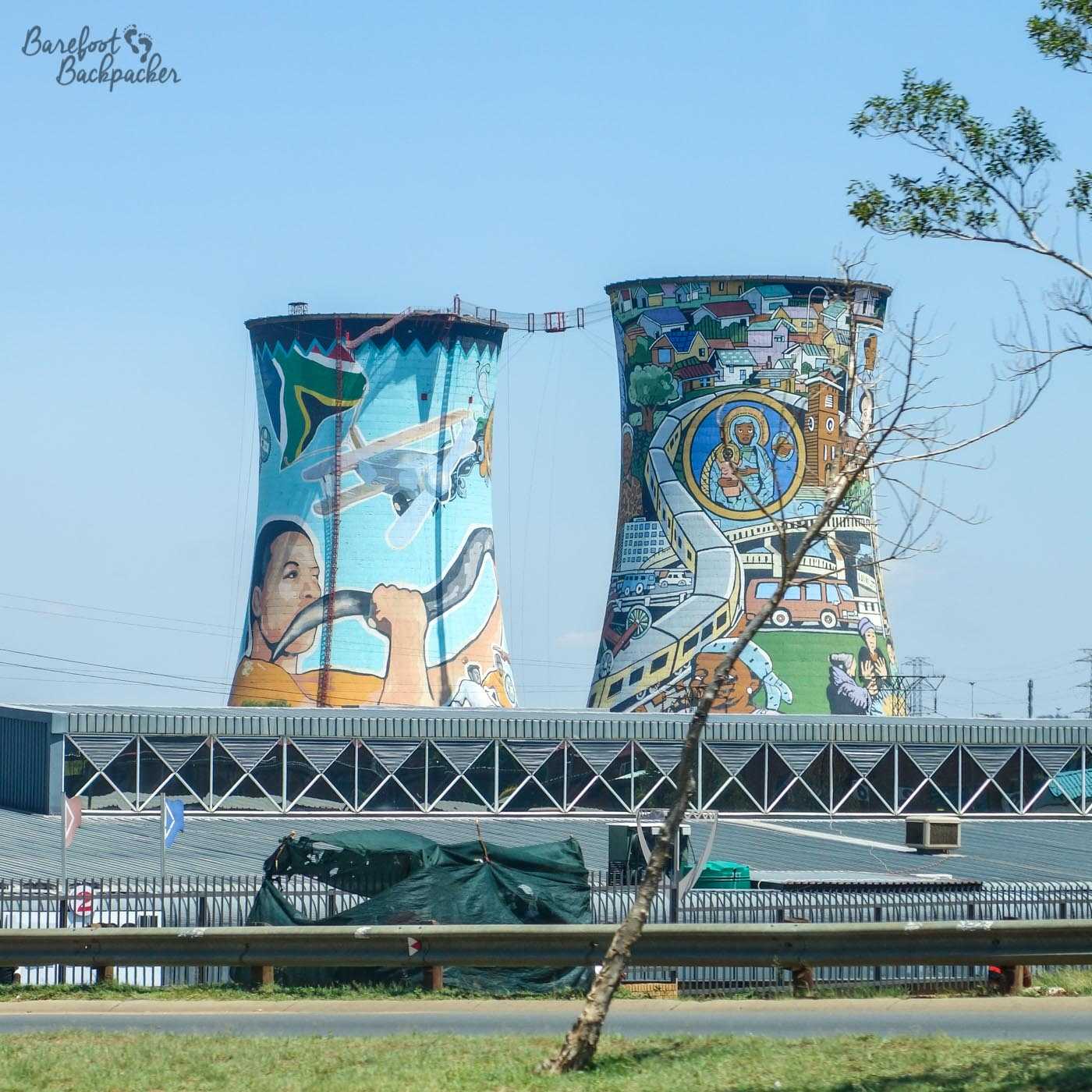
Orlando Power Station cooling towers. Note the bungee platform.
They’re now decorated in murals (one of them is an advert), and you can bungee off the top of them for £30/jump (2020 prices). I wasn’t tempted at Victoria Falls so I certainly wasn’t tempted only a couple of weeks later.
Though I wasn’t in Soweto for very long, it was definitely an interesting place to visit, and I ought to go back there again, spend longer this time walking around. That many of the businesses in the town now are B&Bs/guesthouses tells you all you need to know about where it feels it’s headed.
As for White South Africa, and their perception of crime, Zak suggested property crime in white middle-class neighbourhoods occurred precisely because so many people hid behind electric fences – everyone isolates themselves, and don’t speak to their neighbours, so consequently there’s no community spirit, just paranoia and a lack of community retribution should a crime occur. Whereas in Soweto, such crimes were negligible, partly because people had less material goods of course, but partly also because everyone knows everyone else, and a crime against one person is a crime against the whole community.
My perceptions of Soweto have changed. Maybe now it’s your turn.
—
Like this post? Pin it?

Visited: 9 January 2016